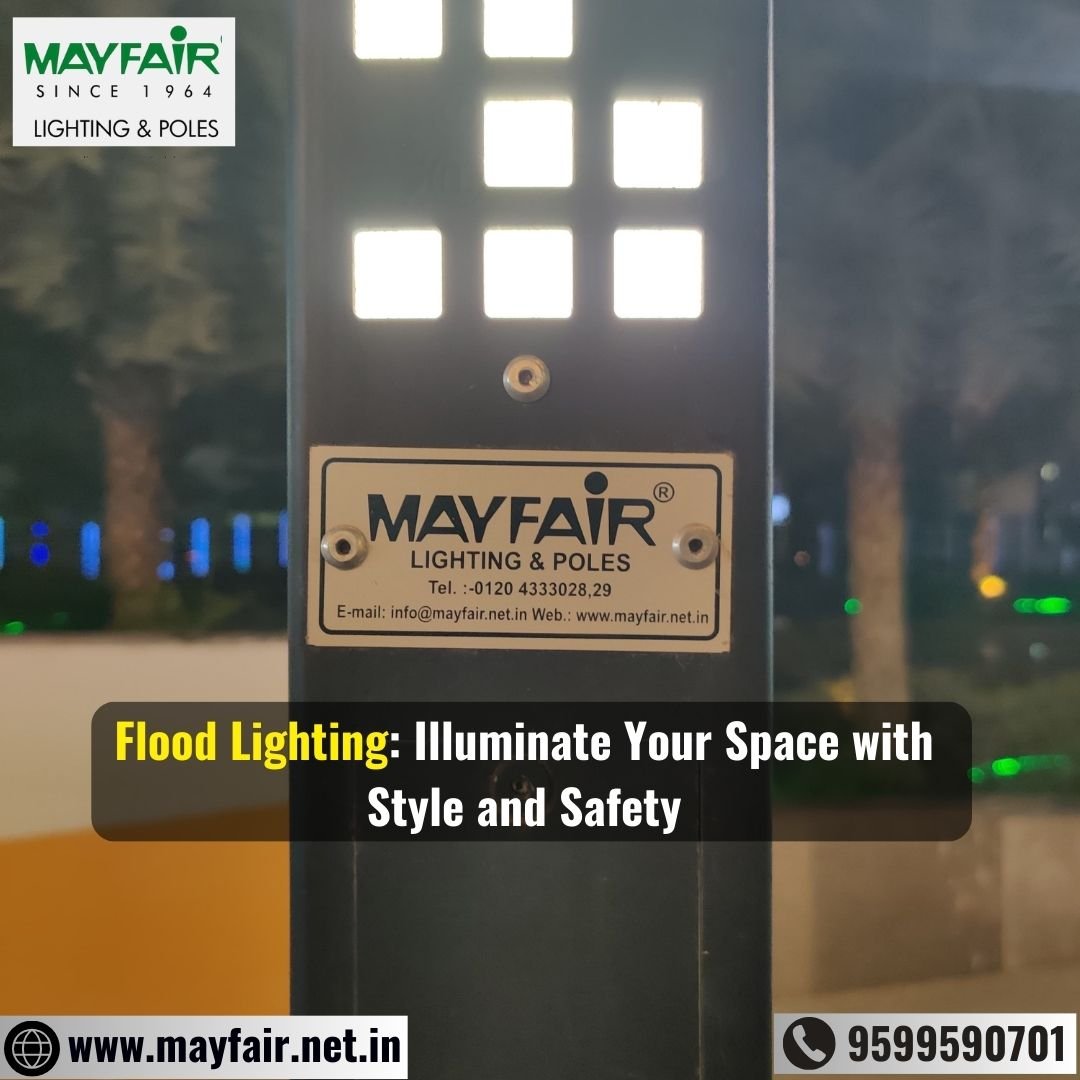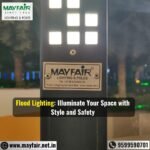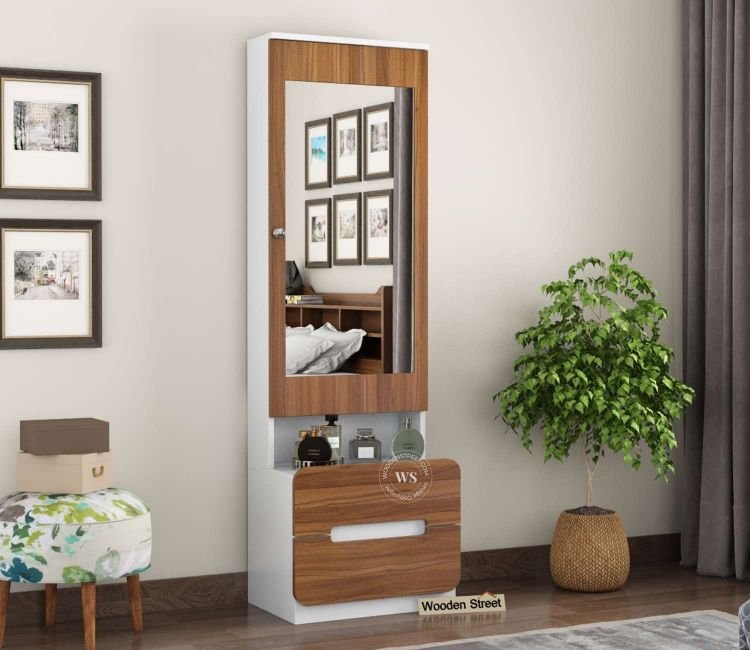Flood lighting is an essential element in modern illumination design, offering a perfect blend of functionality and aesthetic appeal. Whether you’re enhancing the safety of your property, illuminating a large outdoor area, or adding a touch of style to your landscaping, flood lighting provides a versatile and effective solution. In this article, we will explore the various aspects of flood lighting, its benefits, applications, and tips for choosing the right flood lighting for your needs.
What is Flood Lighting?
Flood lighting refers to high-intensity lighting fixtures designed to illuminate large areas with a broad beam of light. These fixtures can be mounted on poles, walls, or ceilings, providing extensive coverage and ensuring that expansive spaces are well-lit. Flood lights are commonly available in various types, including LED, halogen, and metal halide, each with its own set of benefits.
Benefits of Flood Lighting
- Enhanced Safety and Security
One of the primary advantages of flood lighting is its ability to improve safety and security. By illuminating driveways, parking lots, pathways, and entrances, flood lighting deters crime and reduces the risk of accidents. Brightly lit areas are less appealing to intruders and create a safer environment for both residents and visitors. - Versatility
Flood lighting is highly versatile and can be used in a wide range of applications. From residential to commercial and industrial settings, these lights are suitable for various environments. They can be used for lighting sports fields, construction sites, event venues, and even residential gardens, showcasing their adaptability. - Aesthetic Appeal
Beyond functionality, flood lighting enhances the aesthetic appeal of a space. By strategically placing flood lights, you can highlight architectural features, landscaping, or outdoor art installations, creating a visually appealing atmosphere. This is particularly beneficial for businesses looking to attract customers with an inviting exterior. - Energy Efficiency
Modern flood lighting options, particularly LED flood lights, are designed to be energy-efficient. LED flood lights consume significantly less power than traditional incandescent or halogen bulbs while providing the same or even higher brightness levels. This not only reduces energy costs but also decreases your carbon footprint. - Low Maintenance
Flood lighting systems, especially those using LED technology, require minimal maintenance. With a longer lifespan compared to traditional bulbs, LED flood lights reduce the frequency of replacements, saving time and money in the long run.
Applications of Flood Lighting
- Residential Use
Homeowners frequently use flood lighting to enhance their outdoor spaces. These lights can illuminate patios, gardens, and driveways, providing both safety and aesthetic enhancement. Additionally, flood lighting can be used to accentuate architectural features of a home, creating an inviting atmosphere for guests. - Commercial Properties
For businesses, flood lighting is crucial in ensuring safety and security. Retail stores, warehouses, and parking lots benefit from well-lit environments that deter criminal activity and accidents. Moreover, flood lights can be used to highlight signage or promotional displays, increasing visibility and attracting potential customers. - Sports Facilities
Flood lighting is essential in sports fields and arenas, allowing events to take place after dark. High-intensity flood lights provide uniform illumination across the playing area, ensuring that athletes and spectators can see clearly. This is crucial for maintaining safety and enhancing the viewing experience for fans. - Construction Sites
In construction environments, flood lighting is vital for worker safety and productivity. Well-lit job sites minimize the risk of accidents and help workers navigate safely. Flood lights enable extended working hours, allowing construction projects to progress more efficiently. - Event Lighting
For outdoor events such as weddings, concerts, and festivals, flood lighting creates a festive atmosphere while ensuring safety. By illuminating large areas, event organizers can enhance the experience for attendees, making the event more enjoyable and memorable.
Choosing the Right Flood Lighting
When selecting flood lighting for your space, consider the following factors:
- Purpose
Identify the primary purpose of your flood lighting. Are you aiming for security, ambiance, or both? Understanding your goals will help you choose the appropriate brightness and beam angle. - Brightness
Flood lights come in various wattages and lumens. Higher wattage typically means brighter light, but it’s essential to select a brightness level that suits your needs. For security applications, brighter lights are recommended, while softer lighting may be suitable for creating ambiance. - Energy Efficiency
Opt for LED flood lights, which are energy-efficient and have a longer lifespan compared to traditional options. While the initial cost may be higher, the savings on electricity bills and reduced maintenance make them a cost-effective choice in the long run. - Beam Angle
The beam angle of flood lights determines how wide or narrow the light spreads. For large areas, a wider beam angle is ideal, while a narrow beam may be suitable for focusing on specific features, such as a sculpture or architectural detail. - Durability and Weather Resistance
If you’re installing flood lights outdoors, choose models that are weather-resistant and durable. Look for lights with high IP ratings, indicating protection against dust and water, ensuring they can withstand the elements. - Installation and Positioning
Proper installation and positioning are crucial for maximizing the effectiveness of flood lights. Consider the height and angle at which the lights will be mounted to achieve optimal coverage. Professional installation may be necessary for larger or complex setups.
Tips for Installing Flood Lighting
- Plan Your Layout
Before installation, plan your layout carefully. Identify areas that require illumination and determine the best locations for your flood lights. Consider the beam angle and brightness to ensure adequate coverage. - Use Motion Sensors
Incorporating motion sensors with your flood lighting can enhance security while saving energy. These sensors will turn on the lights only when movement is detected, ensuring that you’re not wasting energy on unoccupied areas. - Adjust Brightness Levels
Some modern flood lights come with dimmable features or adjustable brightness settings. This flexibility allows you to customize the lighting according to your needs and create the desired ambiance. - Regular Maintenance
Although flood lights are low-maintenance, it’s essential to periodically check for any dirt or debris that might obstruct the light.
Conclusion
Flood lighting is an invaluable tool for illuminating spaces with style and safety. Its versatility makes it suitable for a variety of applications, from residential gardens to commercial properties and sports facilities. By understanding the benefits, applications, and considerations for choosing flood lighting, you can make informed decisions that elevate your environment.
Also read:- https://empireadda.com/



